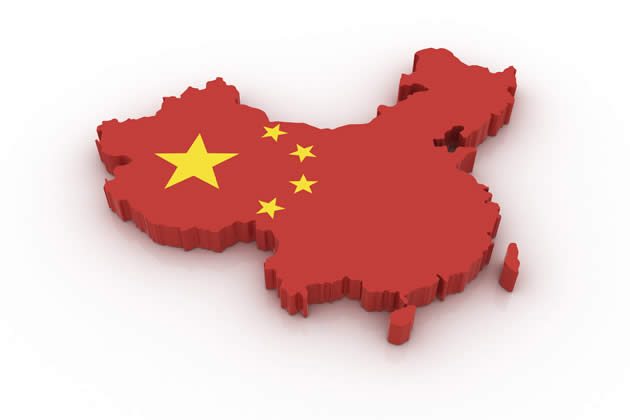Unpacking China’s poverty alleviation strategy

Lovemore Chikova News Editor
Not so long ago, most Chinese people would ask each other: Ni chi le ma? (Have you eaten?), instead of: Ni hao ma? (How are you?). This was the time when Chinese citizens were wallowing in so much poverty that their major concern was getting something to eat. The language developed as neighbours began to feel for each other and reflected the plague of poverty that was bedevilling Chinese society at the time.
This was before the Asian country embarked on a deliberate programme to uplift its citizens out of poverty from 1978. Today, China’s remarkable poverty alleviation strategy has been credited for being one of the best examples in the world.
The strategy has been dubbed the “world miracle” by some and has shown that with unity of purpose, countries can successfully eliminate poverty. The World Bank notes that due to China’s effective poverty alleviation programme, 500 million people were lifted out of poverty by 2012, as the rate fell from 88 percent in 1981 to 6,5 percent.
Latest statistics show that more than 700 million people in China are now living a poverty-free life, while only 50 million are still facing the problem.
The Asian country has set a target to wipe out poverty among the remaining 50 million people by 2020, which means China will have totally eliminated poverty in the next four years.
The people still living in poverty are mainly in the rural areas and in ethnic minority areas, which are often mountainous and need more resources for poverty alleviation projects to be undertaken.
China’s massive poverty alleviation programme started with the Third Plenary Session of the Eleventh Central Committee of the Communist Party of China held in December 1978.
Huang Chengwei in his book “China’s Poverty Alleviation Operations” notes that before the reform and opening up policy was adopted at that meeting, China was confronted with widespread poverty characterised by harsh living and working conditions.
Statistics Huang provided show that in 1978, China’s per capita Gross National Product was only $632, at least 10 percent of the world’s average level and 34 percent of the average level in developing countries.
But that 1978 CPC plenary session opened the way for China’s fight against poverty as it marked the start of the country’s deliberate policy to open up to world capital.
The reform and opening up policy is credited for China’s rapid and astonishing industrialisation process, as investors flocked to the Asian country.
Expansive urban areas, supported by industries and other social services, started sprouting up in China, thereby creating the much-needed employment.
The government introduced free education, which helped those in poverty who could not afford to proceed to higher levels.
The free education accounted for the experts who helped drive the industrialisation process.
With the massive industrialisation, China’s urban poverty had almost disappeared by the end of the 1990s.
This left the majority of the poor living in the rural areas.
The major economic activity in the rural areas is agriculture and it followed that the panacea to poverty alleviation there was to reform the sector.
Agricultural development was given the same priority status as industrialisation.
This was being done with the ultimate goal of establishing socialism with Chinese characteristics.
Taxes, which had existed for centuries in the agricultural sector, were removed as a way of improving the status of the farmers.
Areas most affected by poverty were targeted in such programmes, where agricultural modernisation and infrastructure development were given a priority.
The modernisation of agriculture resulted in the improvement of farmers’ skills through practical agricultural technological training.
Rural tourism was another move which played a major role in poverty alleviation in China’s rural areas.
People, with the help of the government, were urged to develop tourist attractions in their localities and upgrade their homes to cater for tourists.
This programme is working so perfectly in places like Wulong County, where rural tourism earned more than 200 million yuan (almost $30 million) in 2012.
But most of the credit for uplifting people from poverty in rural areas goes to measures taken in improving agriculture.
Apart from mechanisation, the Chinese government encouraged diversification and commercialisation of the sector.
This was supported by land reform, which took land from collectives — that operated like cooperatives — to individual households.
The households became more responsible for production, as compared to collectives where people worked in groups.
An analysis done by the government revealed that the 42,2 percent output growth in agriculture between 1978 and 1984 was attributable to such land reforms.
And 97 percent of the productivity growth was directly because of the reform of agriculture from collectivisation to household ownership.
In a bid to encourage more farmers to increase production, the Chinese government also reformed the pricing system for crops to become more attractive.
Records show that from the beginning of 1979, prices of grain were increased by 20,9 percent, oil crops 23,9 percent, cotton 17 percent, sugar crops 21,9 percent and pork 24,3 percent.
To alleviate poverty in mountainous areas like Guangxi and Guizhou in southern China, programmes such as Food-for-Work were started to encourage the development of infrastructure.
A documentary titled “An Open China, Colourful Guizhou, Global Vision”, shown to diplomats and the media in Beijing on Tuesday, indicated that the province is now catching up in poverty alleviation.
Diplomats from different continents addressed the guests and pledged to invite investors from their countries to Guizhou.
What is important in China’s poverty alleviation programme is that it has the political backing at the highest level.
In June 2015, President Xi Jinping went to Huamao Village in Guizhou to inspect the local poverty reduction efforts.
He praised the local government for preserving the essence of the area, while developing the economy.
In other areas, the poverty reduction programme includes the relocation of people from barren lands.
One such example is in Ningxia Hui Autonomous region, where families living in mountainous areas, where they struggle for land, water and pastures, are being relocated.
A recent visit to the area by a group of African journalists revealed that the programme is a huge success.
At their new settlement near Yinchuan City, the capital of Ningxia, the families are provided with a modern house, a greenhouse and training in modern and technical farming methods.
Social services like a school and a hospital have also been established to cater for the relocated families.
China’s western provinces are the most affected by poverty and the government has devised a policy of pairing the much developed eastern provinces with those in the west.
The developed provinces are expected to commit resources to help the undeveloped provinces which they are paired with.
Beijing has been paired with Inner Mongolia, Tianjin–Gansu, Shandong–Xinjiang, Zhejiang–Sichuan and Guangdong – Guangxi,
Dalian, Qingdao, Ningbo and Shenzen will help Guizhou, Shangai–Yunnan, Liaoning–Qinghai, Jiangsu–Shanxi, Fujian–Ningxia, and Xiamen and Zhuhai–Chongqing.
Former Chinese President Deng Xiaoping, who is credited with creating the new China, pronounced that in the opening up and reform process, regions which got prosperous first should help those still in poverty.
This, he said, would ensure that everyone in China achieves a common prosperity.
China’s poverty alleviation policies are anchored on the Poverty Reduction Programme (1994-2000), the First Ten-Year Poverty Reduction Programme (2001-2010) and the Second Ten-Year Poverty Reduction Programme (2011-2020).







Comments